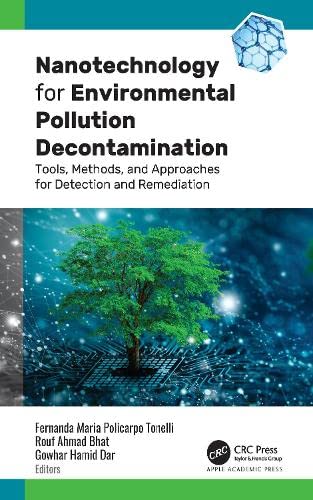

Most ebook files are in PDF format, so you can easily read them using various software such as Foxit Reader or directly on the Google Chrome browser.
Some ebook files are released by publishers in other formats such as .awz, .mobi, .epub, .fb2, etc. You may need to install specific software to read these formats on mobile/PC, such as Calibre.
Please read the tutorial at this link: https://ebookbell.com/faq
We offer FREE conversion to the popular formats you request; however, this may take some time. Therefore, right after payment, please email us, and we will try to provide the service as quickly as possible.
For some exceptional file formats or broken links (if any), please refrain from opening any disputes. Instead, email us first, and we will try to assist within a maximum of 6 hours.
EbookBell Team

4.7
106 reviewsThis new volume presents informative research on the different aspects of employing nanotechnology for environmental pollution decontamination, highlighting the main tools, methods, and approaches for contaminants detection and remediation.
The book takes a biotechnological point of view that considers the main environmental pollutants; the safety and economic aspects of nanoremediation, nanosensors and nanobiosensors for the detection of pollutants; and strategies to promote nanoremediation and nanobioremediation. The chapters offer a comprehensive overview of nanotechnologic strategies as essential tools to restore polluted environments and to make more feasible and harmonic the pathway to sustainable development. The volume also discusses the use of sensors to detect pollutants and to monitor the quality of environmental restoration.
Topics include nanozymes; organic and inorganic pollutants threatening human health; different types of carbon-based and non-carbon-based nanomaterials in nanosensors and nanobiosensors to detect environmental pollution; nanomaterials that specifically deal with water, soil, or air pollution; and assisted nanoremediation promoted by plants (nanophytoremediation) or microorganisms (for example, mycorrhizal fungus) that promote in situ nano-phyto-mycorrhizo-remediation. Also addressed are aspects related to a macroperspective of nanoremediation that highlight the economic aspects related to nanotechnology, the safety aspects of the use of nanomaterials, and the sustainability aspects related to the use of nanomaterials in strategies of environmental restoration.
Nanotechnology for Environmental Pollution Decontamination: Tools, Methods, and Approaches for Detection and Remediation offers extensive and comprehensive knowledge on nanotechnology applied to pollution detection and remediation, assisted or not by biological strategies.